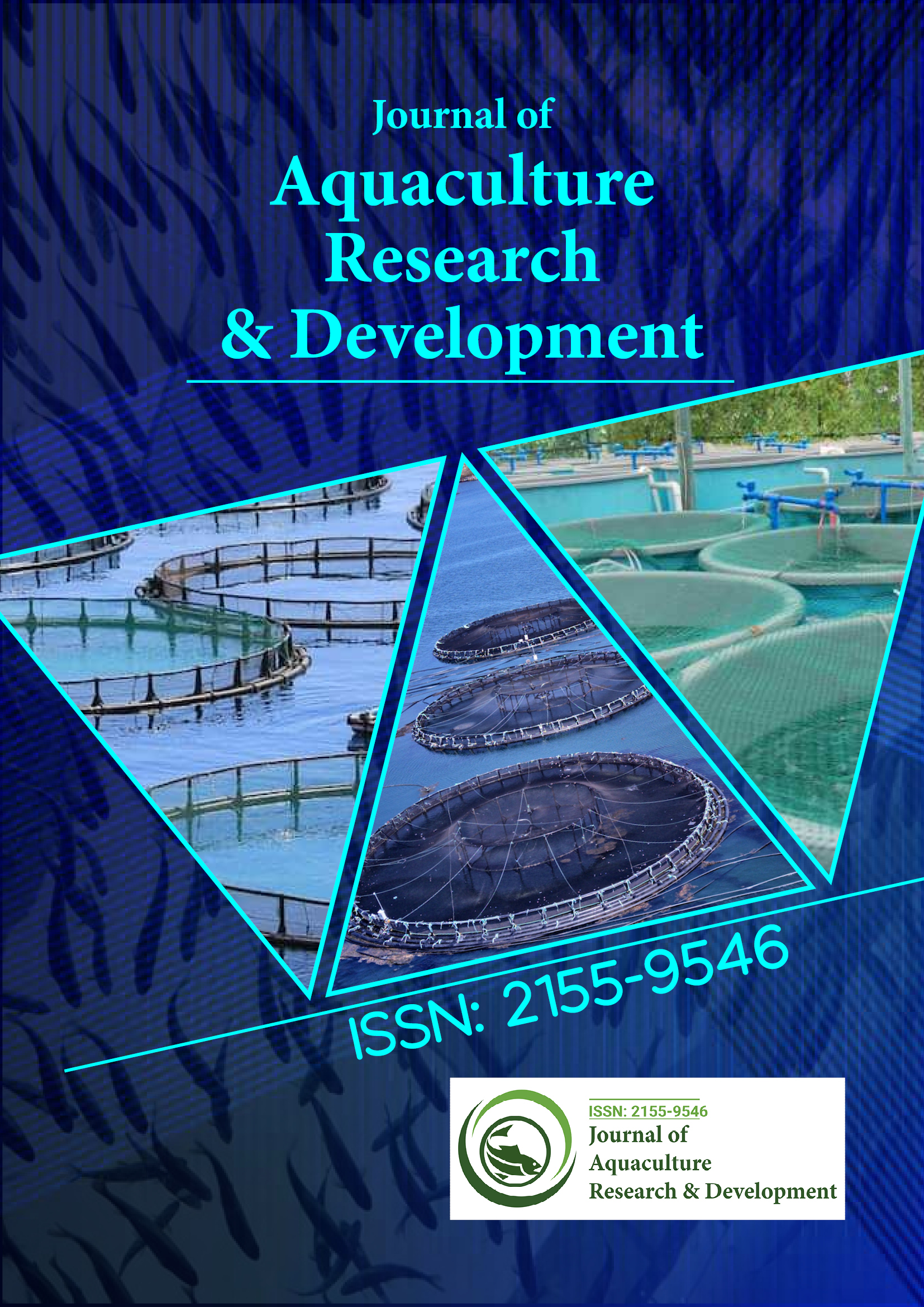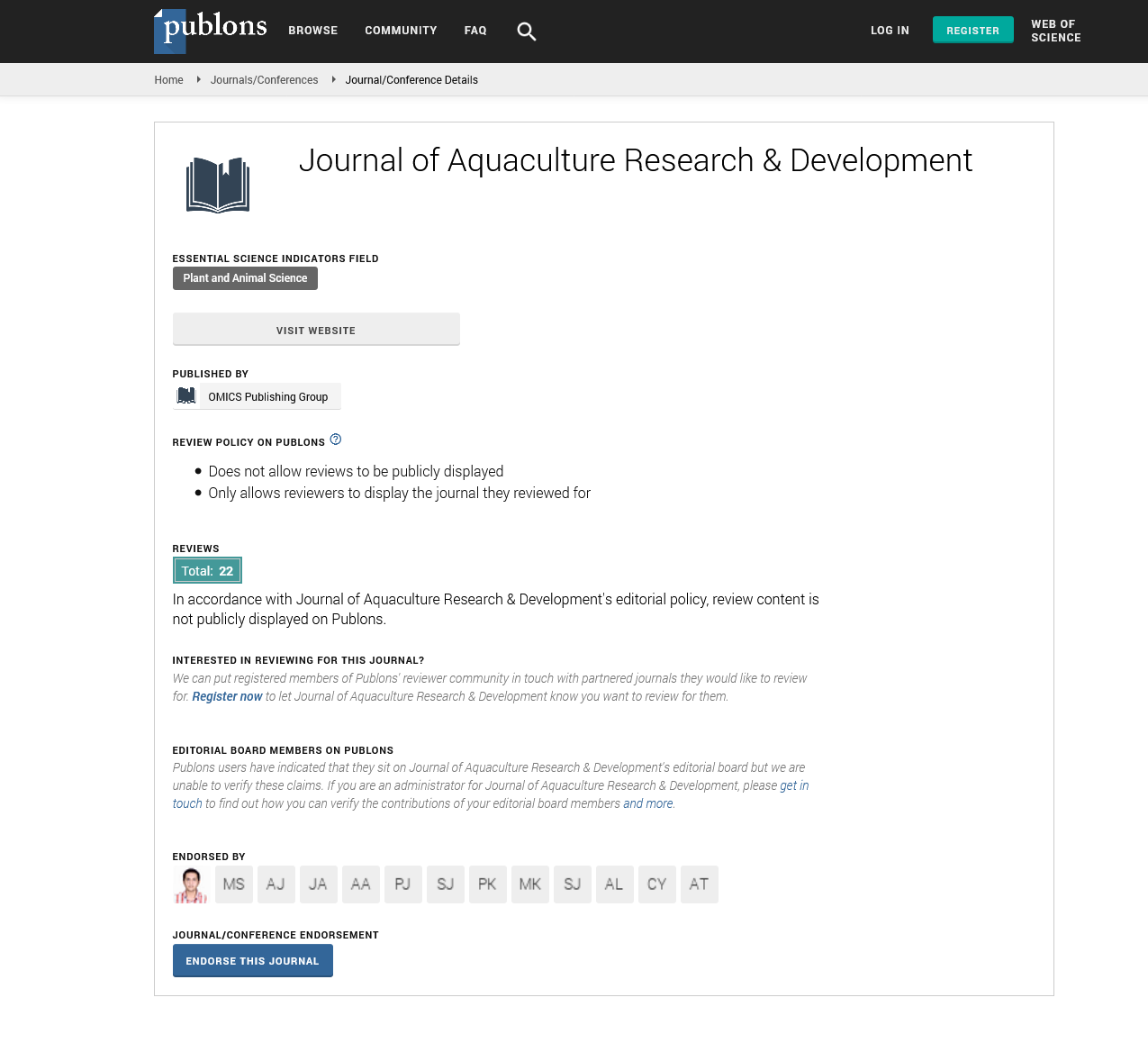Indexed In
- Online Access to Research in the Environment (OARE)
- Open J Gate
- Genamics JournalSeek
- JournalTOCs
- Scimago
- Ulrich's Periodicals Directory
- Access to Global Online Research in Agriculture (AGORA)
- Electronic Journals Library
- Centre for Agriculture and Biosciences International (CABI)
- RefSeek
- Directory of Research Journal Indexing (DRJI)
- Hamdard University
- EBSCO A-Z
- OCLC- WorldCat
- Scholarsteer
- SWB online catalog
- Virtual Library of Biology (vifabio)
- Publons
- MIAR
- University Grants Commission
- Euro Pub
- Google Scholar
Useful Links
Share This Page
Journal Flyer

Open Access Journals
- Agri and Aquaculture
- Biochemistry
- Bioinformatics & Systems Biology
- Business & Management
- Chemistry
- Clinical Sciences
- Engineering
- Food & Nutrition
- General Science
- Genetics & Molecular Biology
- Immunology & Microbiology
- Medical Sciences
- Neuroscience & Psychology
- Nursing & Health Care
- Pharmaceutical Sciences
Commentary - (2024) Volume 15, Issue 10
Role of Sustainable Aquaculture in Marine Economy Resilience of Bohai Rim Region
Lang Dixie*Received: 25-Sep-2024, Manuscript No. JARD-24-27508; Editor assigned: 27-Sep-2024, Pre QC No. JARD-24-27508 (PQ); Reviewed: 11-Oct-2024, QC No. JARD-24-27508; Revised: 18-Oct-2024, Manuscript No. JARD-24-27508 (R); Published: 25-Oct-2024, DOI: 10.35248/2155-9546.24.15.921
Description
The Bohai Rim Region (BRR) in northern China, adjacent to the Bohai Sea, is a significant zone for economic growth, coastal development and marine industries. This region spans several coastal provinces, including Liaoning, Hebei, Shandong and Tianjin and has a long-standing history of economic activities tied to its marine resources. However, this area also faces a range of environmental and economic challenges, such as resource depletion, pollution and the effects of climate change, which test the resilience of its marine economy. This article observes the factors that influence the resilience of the marine economy in the BRR, as well as the strategies implemented to strengthen it, creating a foundation for sustainable growth and stability in the region.
The BRR’s marine economy, which encompasses industries like fisheries, shipping, aquaculture and coastal tourism, contributes significantly to regional and national Gross Domestic Product (GDP). With China’s growing emphasis on marine economic development, resilience in this sector has become essential. The concept of resilience in the marine economy involves the ability of the region to adapt to changing environmental and economic conditions while maintaining its productivity and ecological health.
Maintaining a resilient marine economy in the BRR is vital due to its large coastal population and reliance on marine industries. Ensuring economic stability amid environmental changes and external pressures is a priority, as disruptions can directly affect both the livelihoods of local communities and broader economic development goals. Building resilience involves addressing both environmental impacts, such as pollution and habitat degradation and socio-economic challenges, such as fluctuating market demands and the need for regulatory adaptation.
The BRR faces a variety of challenges that influence its marine economy. One primary issue is pollution, particularly in the form of industrial wastewater, agricultural runoff and plastic waste. The Bohai Sea, a semi-enclosed sea with limited natural water exchange, is highly susceptible to pollution accumulation, which harms marine biodiversity, reduces fishery yields and affects aquaculture operations. As pollution continues to impact marine resources, industries dependent on these resources face increased difficulties in maintaining profitability and productivity.
Overfishing is another serious concern that affects marine economy resilience in the BRR. Long-standing overfishing practices have depleted fish stocks, threatening the livelihoods of local fishers and reducing biodiversity. This has prompted the need for stricter management of fishery resources, including the enforcement of seasonal fishing bans and the establishment of Marine Protected Areas (MPAs). These measures aim to restore fish stocks but also necessitate short-term adjustments from those dependent on fishing as a primary source of income.
Climate change also presents significant challenges, with sea-level rise, increasing temperatures and ocean acidification posing risks to marine ecosystems and coastal infrastructure. Higher temperatures and altered ocean conditions can lead to shifts in fish populations and affect aquaculture productivity, disrupting local economies. Additionally, rising sea levels threaten coastal properties, ports and other infrastructure essential to the BRR’s economic stability.
In response to these challenges, the BRR has implemented a variety of strategies to enhance marine economy resilience. Environmental regulations and pollution control initiatives are key components of these efforts. The Chinese government has set stricter standards for wastewater treatment and industrial emissions to reduce pollutant loads entering the Bohai Sea. These efforts are designed to improve water quality and protect marine ecosystems, creating a more sustainable environment for marine industries.
The establishment of MPAs represents another strategy to enhance resilience. By designating certain areas as protected zones, these regions aim to restore fish populations, preserve biodiversity and safeguard essential habitats. MPAs also serve as buffers against the adverse effects of overfishing and habitat destruction. While the creation of MPAs requires economic sacrifices in the short term, particularly for those who rely on fishing, the long-term benefits include healthier fish stocks, improved ecosystem stability and increased fishery yields.
Technological innovation in the BRR has also contributed to marine economy resilience, particularly in aquaculture and pollution monitoring. Advances in aquaculture techniques, such as Integrated Multi-Trophic Aquaculture (IMTA), allow for more efficient use of resources and reduce environmental impacts. IMTA involves the farming of multiple species with complementary ecological roles, which minimizes waste and creates a balanced ecosystem within aquaculture operations. Additionally, remote sensing and data analytics have improved the monitoring of marine environments, enabling betterinformed decision-making and more responsive management practices.
Citation: Dixie L (2024). Role of Sustainable Aquaculture in Marine Economy Resilience of Bohai Rim Region. J Aquac Res Dev. 15:921.
Copyright: © 2024 Dixie L. This is an open-access article distributed under the terms of the Creative Commons Attribution License, which permits unrestricted use, distribution, and reproduction in any medium, provided the original author and source are credited.

